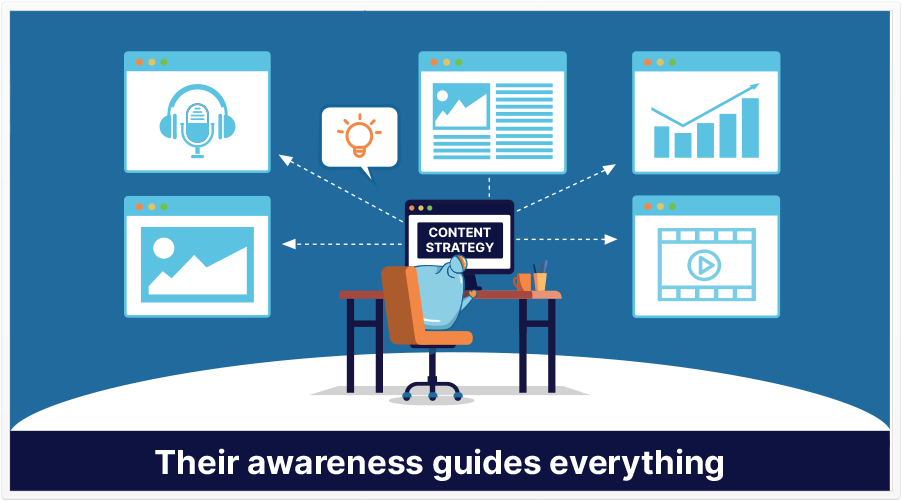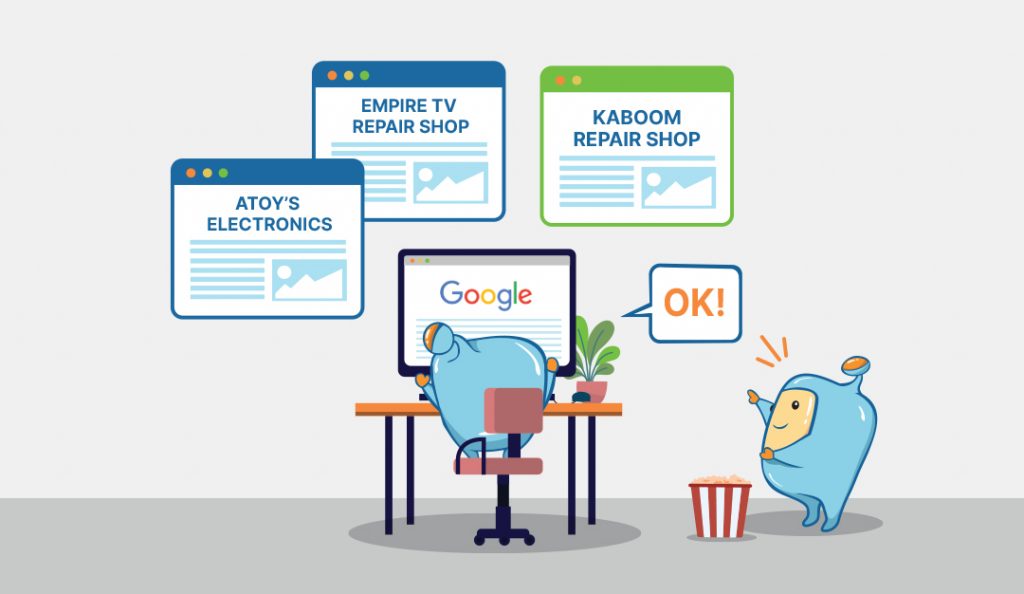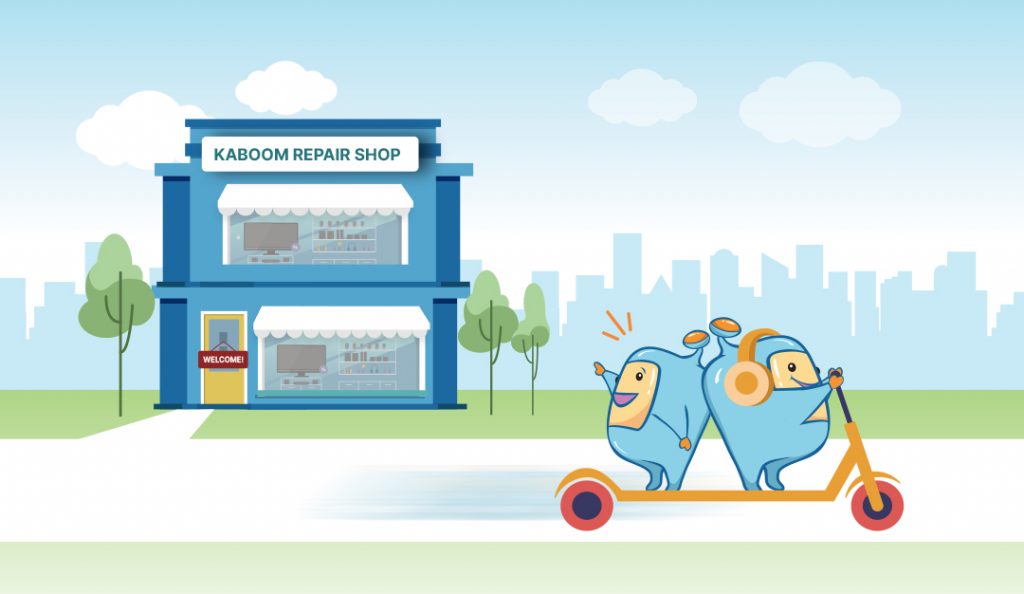
Before I show you my SEO content strategy, you need to know the #1 principle that guides every decision you’ll make.
What is a SEO Content Strategy? Do you really need one? Can’t you just apply SEO principles to your page, get high search engine rankings, get users visiting your page, and just be done with it?
A successful SEO campaign is not only about getting a page ranked in search engines. It is also about ranking the page, getting users to visit your page, satisfying their intent for visiting your page, and converting them. Creating quality content is not enough to achieve a successful seo campaign and it takes a lot of work to achieve a it. A succesful seo campaign starts with having a seo content strategy.
According to research, over 7.5 million blog posts are published daily. With that much content being published, you need to publish content that stands out from everyone else and content that people are searching for. You cannot just write content just so you can have content and expect to get results from it, even if you apply some seo concepts on it. You need a seo content strategy that takes into account your market, your target audience, and the keywords to target. In this article, we will talk about my seo content strategy. But first, let us start with the #1 principle that will guide every decision you’ll make.
Not your awareness, but the level of awareness of your target audience, (potential) customer, or client.
When it comes to customer awareness, I think that the earliest reference I can think of is Breakthrough Advertising by Eugene M. Schwartz.
My understanding is that Schwartz said that, for every person who will ever become a client or customer, there’s a continuum of awareness that they journey through (like a buyer’s journey). First, they’re not even aware that they have a problem, and they progress until the point where they’re aware of your offer and are ready to do business with you.
Although I think Schwartz laid out 4 levels of awareness, I’m going to list out 7 of them below. If you’ve heard the concepts of buyer’s journey, marketing funnels, or similar customer acquisition processes, you may recognize some of these stages.
As digital marketers, before we begin writing (or otherwise creating) any piece of content, we need to have an understanding of where our future and current customers are along this 7-point continuum:
If you look at those 7, it’s easy to see a person moving from being completely unaware that they have a problem, to eventually saying, “I’ll buy from you again.”
First, they’re unaware. Then, they’re aware of a problem, want, or need. They then look to see if there’s a solution. Fourth, they’re aware of possible solutions. Fifth, they’re aware of your products or services (as opposed to your competition’s), then, they’re aware about you (or your company), and when they buy, they hopefully have such a good experience, that they think, “I’ll go there again,” or “I’ll buy from you again.”
So, within your target market, there are individuals at almost each of the 7 stages. When you consider this, it makes you realize that, for each piece of content you create, you have to speak not just to your target market or target reader, but to where this particular person is at their current stage of awareness.
In other words, a comprehensive search engine optimization content strategy has several pieces and types of content that span across most of the 7 stages.
(Most…except maybe the first stage, because it’s quite difficult to reach someone who isn’t aware that there’s a problem, but the rest of the stages are worth considering.)
Of course, we all want organic traffic from the search engines. Having different types of content (articles, videos, slide presentations, images, etc), both on our site and syndicated across the web, is like casting a huge net.
So, with this in mind, let’s start getting into the planning stages of creating an SEO content strategy.
Here’s an overview of the steps to take when creating your content strategy.

Because part of this process involves keyword research, we have to know not just the search queries (keywords) that people enter into the search engines, but we have to also know the search intent.
That is, “What’s going on in the mind of someone who enters this search query?”
When we can answer that question (or at least take a reasonable guess), we have an insight into their level of awareness–that is, which of the 7 stages they’re at on the continuum of awareness.
Practically every keyword phrase belongs to at least one of the 7 stages. When you consider that the 7 stages encompass a buyer’s journey, you know that if a person enters search query (keyword) fill-in-the-blank, then you can guess as to where they are in the buyer’s journey. That way, you can meet them where they are and, with insight and skill, hopefully gently coax them along the journey.

Yes, it’s time to consider the big picture.
What are you or your company’s values? I’m sure you know what they are, but I want you to use those values to create a context for your SEO content strategy.

Aims, objectives, and goals, are sort of similar. In my usage, I think of aims as sort-of long-term, objectives as more short-term, and goals as even more short-term.
I use those terms because I want to emphasize that, blended with your values, an SEO content strategy is ultimately a long-term plan with shorter-term milestones and evaluations.
If your town has an abundance of dentists, and you know that your dentistry practice is the best in town, then perhaps your aim is to provide educational content as to why your approach (new dental methods, cutting-edge science, etc.) is unlike any other dentist in town.
Or, maybe your aim is to simply offer well-produced, high-quality content (not just in the form of articles) that appeals to those who are deciding which service provider they’ll choose.
If you know your values, but don’t yet have a solid aim, that’s fine: hopefully, as you go through this process, a possible aim will become more clear. In the following steps, you’ll come to understand what you’re capable of (as far as SEO competition), and from there, you can better decide how you want to allocate your resources.

When devising a solid SEO content strategy, keyword research will, at some point, be integral to the proces. Extensive keyword research, using powerful tools, can help you understand the strength of your competitors and of the SEO competition of your industry overall.
For example, if the top 10 sites in your industry are many years old, have thousands of backlinks and good strength metrics, then you know you have some formidable competition.
But, formidable competition shouldn’t necessarily discourage you. There are many thousands of underserved, niche keywords that have low keyword difficulty. These can serve as great SEO opportunities–areas where you can get your foot in the door at start attracting long-tail traffic.
Once you have an idea of how established your SEO competitors are, you need to envision how you’re going to compete with them. You need to see this as not only possible, but understand how you’re going to do it.
If a competing site is large (has hundreds or even thousands of indexed pages and gets multiple times what you get in organic traffic), then it might take years to be a viable SEO competitor.
That means, from the perspective of content creation, you’ll have to devise a multi-year content budget. If video creation is part of your plan, then shooting, lighting, and editing are also considerations.

This is a continuation from the previous step. It’s worth restating because before you begin, you have to really understand what you’re up against. Depending on your industry, it may serve to think of SEO as a multi-year war that never ends.

You now have enough information to decide.
Are you going to succeed, and massively attract potential customers to your buying cycle and gain many hundreds (or thousands) of email subscribers?
Are you going to hire any extra staff that you need?
If your domain is relatively new (say, less than 5 years old), and most of your competitors’ sites are about well-established (say, more than 5 years old and have strong SEO strength), then you need a medium- to long-term plan.
By medium- to long-term, I mean 5 to 10 years.
Yes. If you’re serious about succeeding, this is the timeline you need to look at.
That said, I certainly don’t mean that you have to endure years of 0 results from your efforts.
It’s more that the opposite is true. Part of a fluid content creation strategy involves:
Do you need to publish videos? If so, what kind of videos?
What about white papers?
Test result graphs?
Images?
If your product has an instruction manual, can you publish it on your site, so that prospective buyers can learn exactly what needs to be done once they receive your product?
Your audience understanding, the type of content your audience responds to, and your industry are all factors in determining the types of content you’ll need.

This step includes:
Was that last point a bit verbose?
Sorry, that was the best way I could describe it using the terminology. Basically, cornerstone content are a few pieces of content that have the most pull, around which most other content centers, just like the center of a bicycle wheel has spokes protruding from it.

When you prepare to drive, or walk to the grocery story, you have a very well-laid plan in your mind. You’ve likely done this many times, so you know every turn you’ll make when you walk or drive to the supermarket.
You know exactly how long it might take you to get there, where you might park, and even how much food you’ll get.
But even with this plan, which you’ve probably rehearsed several times, you know that unforeseen things may come up.
Likewise, you may think that this plan is exhaustive, but SEO and content are so nuanced that it’s hard to feel that you have a perfect plan. And, to be honest, you probably never will.
But that’s fine, because with something this involved, even the best-laid plans won’t give you the foresight to see absolutely everything that may occur.
The great thing about this is that if you do each of these 10 steps (and continue to iterate), you’ll probably cover most of the major contributors to your content marketing success.
The best you can do is to eventually just take action, measure and assess things, and adjust that way..
These 3 are key aspects of any well-optimized page. Using most of the information in this article will help you find a good balance of these 3.
Don’t forget one of the main principles of content generation and web design: UX, or user experience. That means not only having well-written text, but good images, videos, and an intuitive interface free of distractions.
Depending on your industry, you may want to explore utilizing as wide an array of content as possible. You don’t have to use just blog articles or text-based content.
A great piece of content can be a podcast episode where you (if you’re the expert) are interviewed on a popular podcast.
Another type of content can be how-to videos, charts, and images. If members of your audience are privy to high-quality content of various types, then you stand to gain long-term benefit from creating such content.
This is especially true if you publish content in an evergreen, non-seasonal subject that basically doesn’t change over time. (Because that means that you publish content once, and don’t have to fundamentally change it, with the exception of small, minor updates.)
A comprehensive SEO strategy has several types of content planned into it.
During the planning stages of a great content marketing strategy, there is the use of keyword research tools. If you’re not aware of what keyword tools are, they’re usually software that work through various search engine algorithm updates to try to discover competitive keywords.
A good keyword tool can display a list of keywords, and for the content marketer, these keyword ideas can serve as a starting point for content topics,
If you’re not sure of what it is, internal linking is where a page within your website links to another page on your site. (While, technically, the navigational links to your Home, About, and Content pages are examples of internal links, what some people mean by this term is when a content page links to another page within the text of the page, not the navigational links you see at the top/bottom of most sites.)
Ongoing organic search traffic is a key result of utilizing a well-planned content strategy. And the use of long-tail keywords can help you identify ranking opportunities.
When people come to your page, of course, you want them to stick around. There are a few definitions of bounce rate, and it’s not exactly settled, but basically, it has to do with the percentage of people who leave your page.
We have an article where you can learn more about what is a good bounce rate for your website or blog pages.
Now, people leaving your page is not necessarily a bad thing: if they leave a page to go to another page, then that’s a good thing, because even though they may be leaving a particular page, they’re still staying on your site.
I mention this because we at the SEO Intelligence Agency (SIA) conduct SEO experiments. Basically, we take a widely-held (but possibly unverified) SEO myth, and test that myth in a controlled study.
When it comes to creating a great SEO content strategy, there’s a lot to be learned. A lot of other authoritative sites also talk about this subject, and I urge you to continue your research. If there is one thing you’ve learned from us, I hope it’s clear that the buyer’s journey is one of the main starting points for any piece of content.
